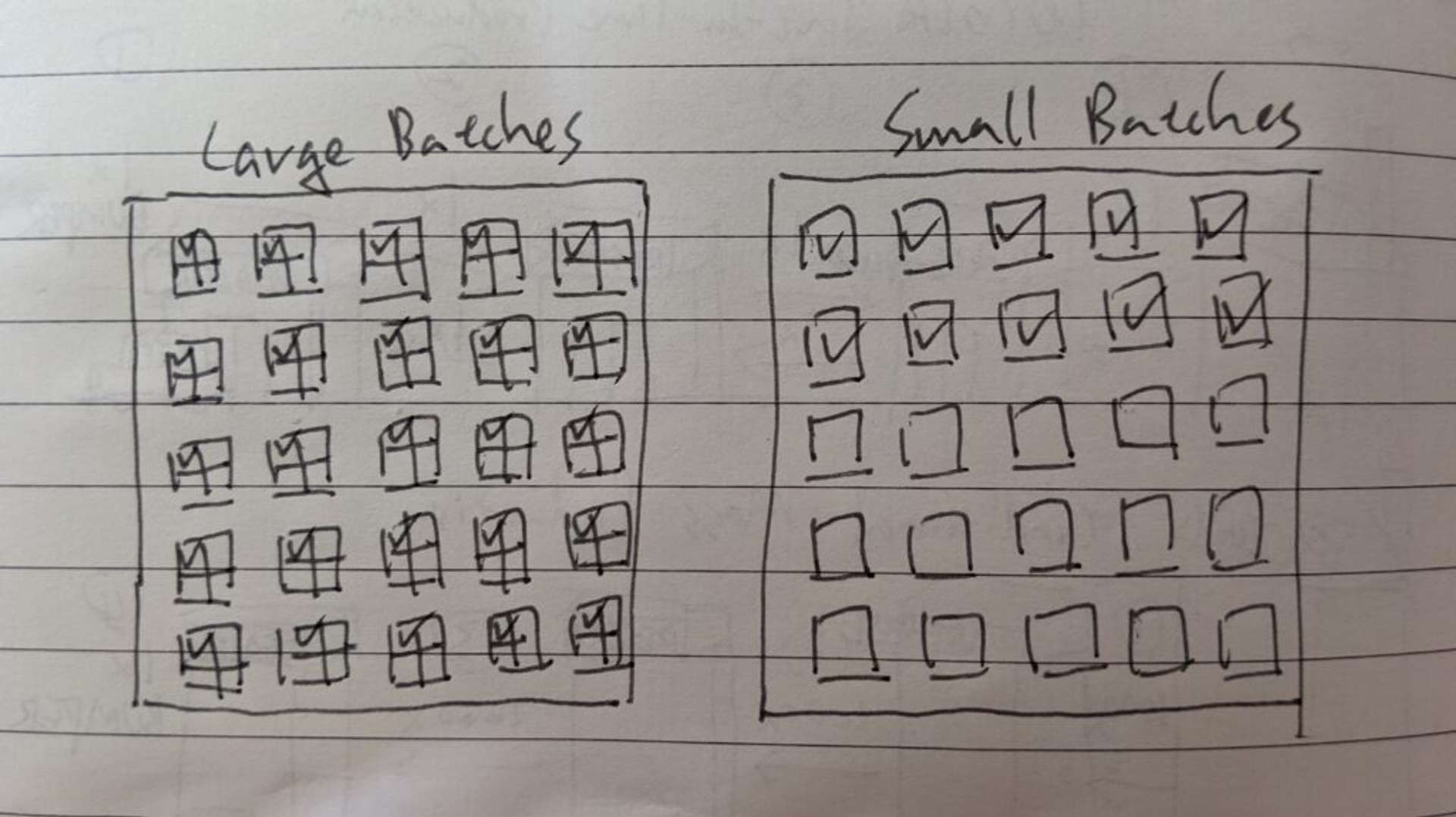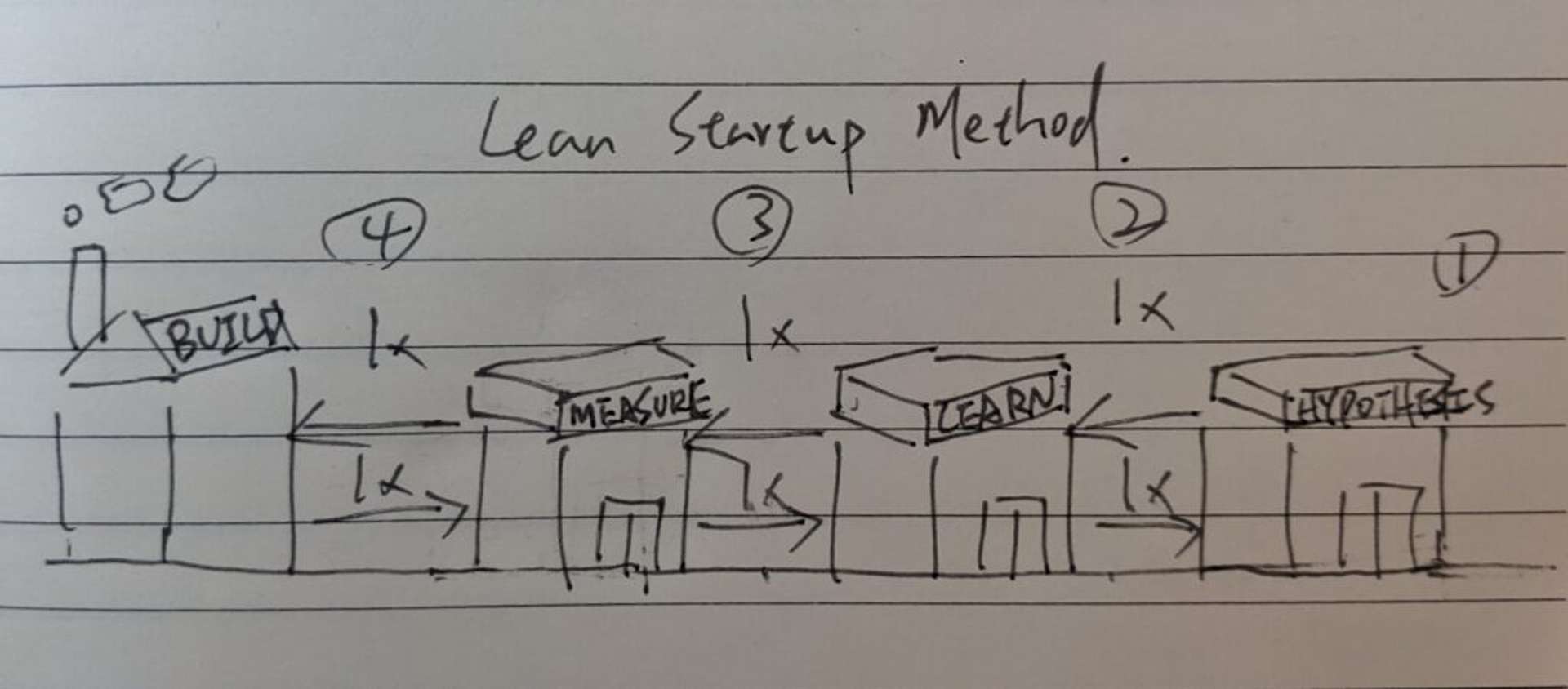Books In Minutes: The Lean Startup Chapter 9 – Batch
In the Lean Startup, the goal is not to product more stuff efficiently. It is to - as quickly as possible - learn how to build a sustainable business.
Eric Ries
The Lean Startup
Read In Minutes Jump to heading
Small Batches Versus Large Batches Jump to heading
It is counter-intuitive that works like stuffing 100 newsletters into envelopes, sealing the envelopes, and putting on stamps would be more efficient to finish all the steps of one envelope at a time than to finish each step of all envelopes at a time. Here's the reasons:
- The time spent on moving from one envelope to the other, and sorting, stacking, and moving the large piles of envelopes slows down the speed
- There are chances that something goes wrong later in a step that requires rework on what has been done

People familiar with computer science could also think of it as context switches. The more context switches there are, the more work CPU has to do to move data between memory and disk.
Why Toyota Has Thrived Jump to heading
The "one envelope at a time" method is called single-piece flow in lean manufacturing. In the post World War II time, Toyota could not compete against the carmakers that adopted mass production method. Going with the small batches strategy allowed Toyota to play it differently. It had these advantages:
- It allowed Toyota to produce diversified products for the fragmented market in Japan
- It allowed Toyota to join the market without having to invest in expensive machines for mass production
- It allowed Toyota to spot defects sooner
Continuous Deployment Jump to heading
People like me working in software must be very familiar with the term "continuous deployment". It is exactly how small batches strategy being applied in the software world.
A small batch of features is added to a software at a time and released to the users. There are monitoring systems and automatic testing systems set up. Anytime the systems sense an error on the live environment, the latest added features got reverted, and engineers will be flooded with alert emails and slack messages. Everyone would stop what they are doing, and investigate the issues immediately.
Toyota's Just-in-time Production Method Jump to heading
Traditional mass production adopting large batches strategy has this disadvantage: to avoid stockouts, a company produces large batches of products, and have them distributed to and stored at the retail stores. Later the products are found useless, it requires the massive effort again to deal with the waste.
Toyota played it differently,
- Whenever a customer orders a part from the dealer, the dealer offer the customer the product, and then inform its local restocking facility for a new one
- The local restocking facility offer the dealer the product, and then inform the regional warehouse for a new one
- The regional warehouse offers the local restocking facility the product, and then inform the factory to produce a new one
This is exactly the idea why the Build-Measure-Learn feedback loop should be worked in the reverse order.

Toyota's Just-in-time Production Method Versus Traditional Mass Production
The Build-Measure-Learn Feedback Loop Jump to heading
A starup's goal is not to produce product efficiently. It is to learn how to build a sustainable business as quickly as possible.
- Make a clear hypothesis
- Figure out what prove the hypothesis right or wrong
- Find out what metrics we need to make the judgment
- Build the MVP with only the features that are required
- Collect metrics
- Decide whether the hypothesis is right or wrong
- Make a new hypothesis

Highlights Jump to heading
It seems more efficient to repeat the same task over and over, in part because we expect that we will get better at this simple task the more we do it. Unfortunately, in process-oriented work like this, individual performance is not nearly as important as the overall performance of the system.
In the Lean Startup, the goal is not to product more stuff efficiently. It is to - as quickly as possible - learn how to build a sustainable business.
Published
